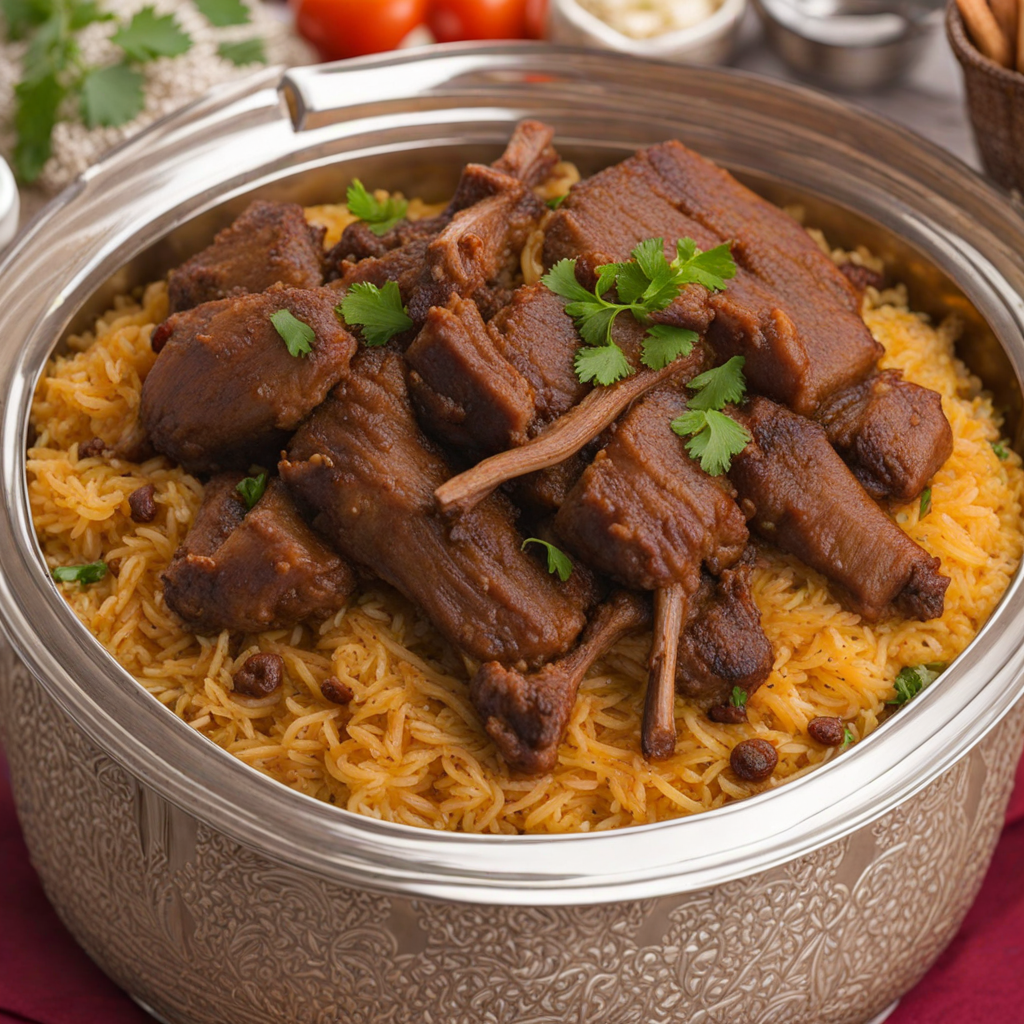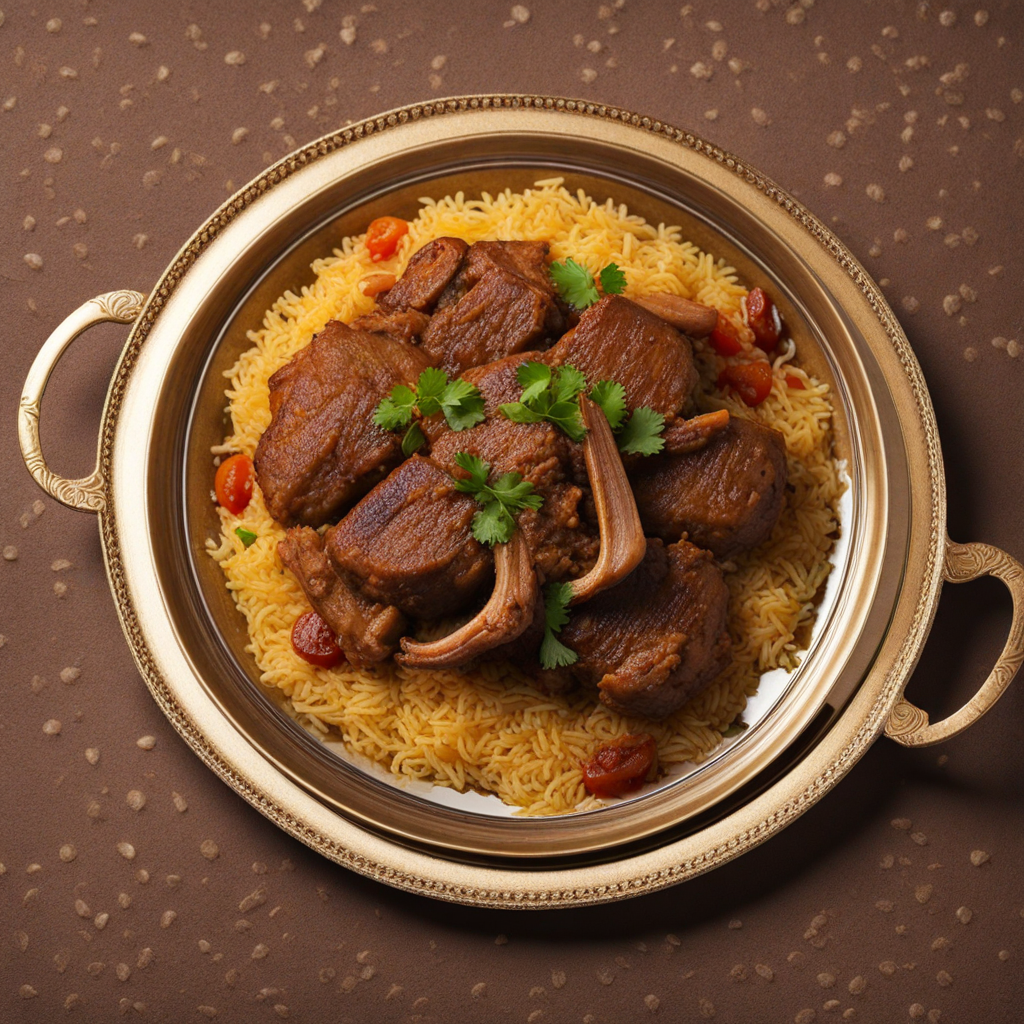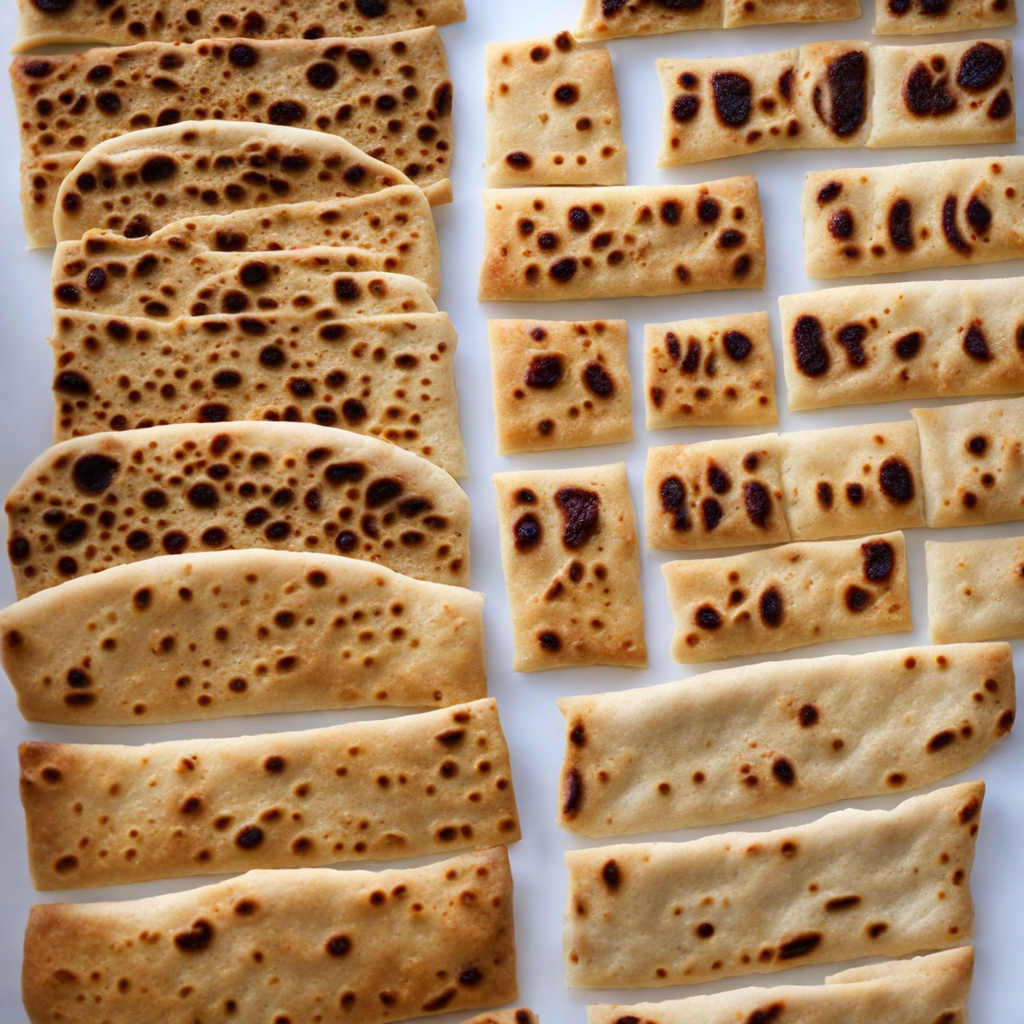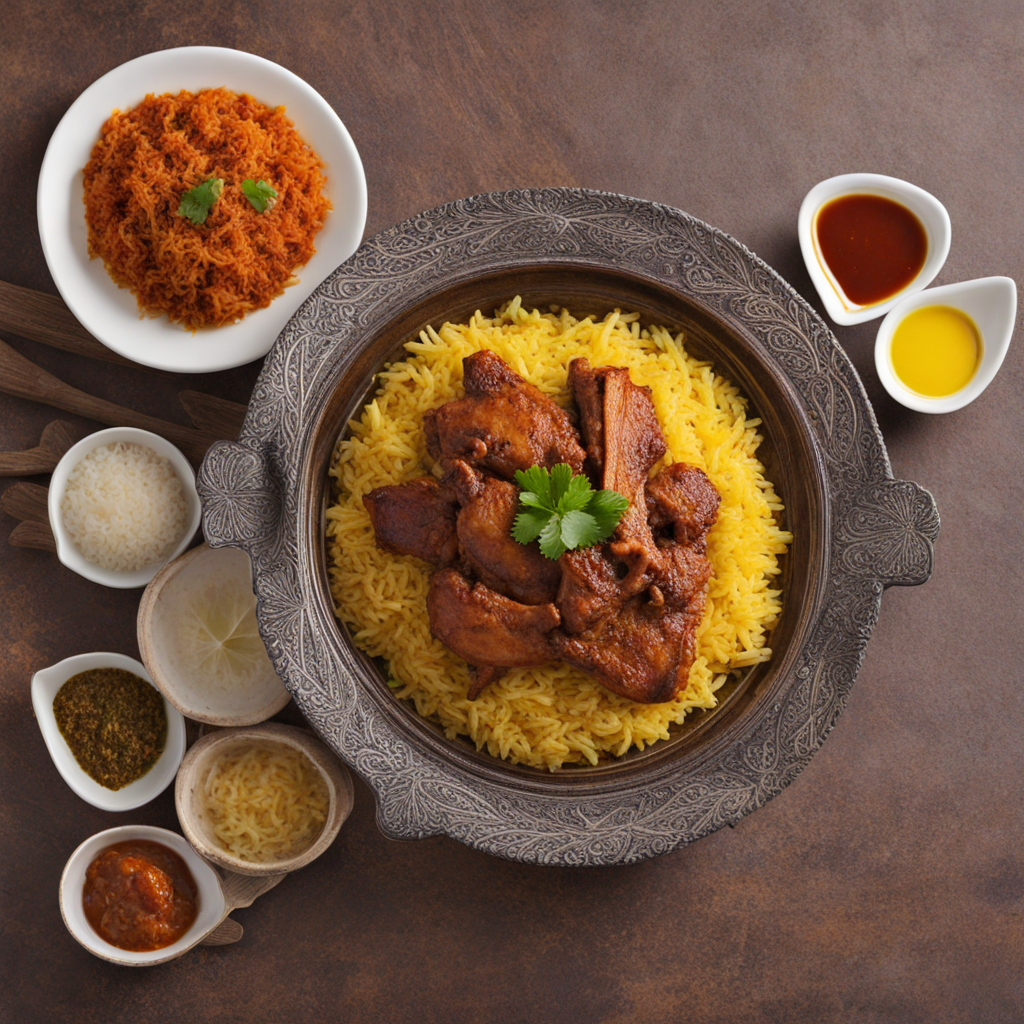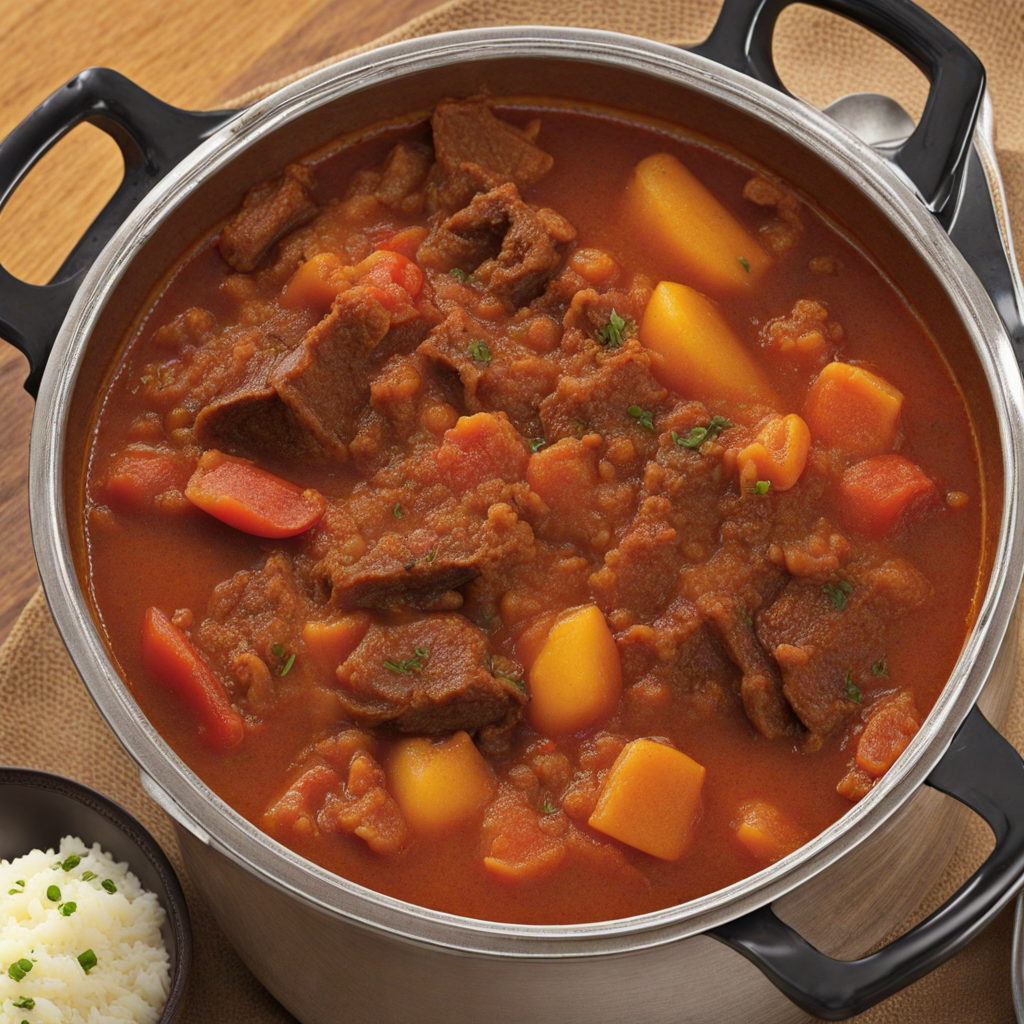Lamb Machbous
Lamb Machbous is a fragrant and flavorful dish that embodies the culinary heritage of Qatar. At its core, this dish features tender, slow-cooked lamb, which is marinated in a blend of aromatic spices such as cumin, coriander, and turmeric. The meat is usually cooked until it is melt-in-your-mouth tender, absorbing all the rich flavors of the spices and the other ingredients. The cooking process often involves sautéing onions and garlic, which forms the aromatic base that enhances the overall taste profile of the dish. The lamb is then combined with basmati rice, allowing the grains to soak up the savory broth, resulting in a deliciously spiced rice that perfectly complements the meat. What sets Lamb Machbous apart is the unique combination of spices that create a warm and earthy flavor. In addition to the traditional spices, some variations might include saffron, which adds a luxurious touch and a beautiful golden hue to the rice. The dish is typically garnished with crispy fried onions and served with a side of tangy tomato sauce or a refreshing salad, providing contrast and balance to the rich flavors of the lamb and rice. Each bite is a harmonious blend of spices, tenderness, and depth, making it a truly memorable experience. Lamb Machbous is more than just a meal; it's a celebration of Qatari culture and hospitality. It is often served during special occasions and gatherings, bringing people together around the table to share in the joy of good food. The communal aspect of enjoying this dish, often eaten with the hands, adds to its charm and authenticity. For those looking to explore new tastes, Lamb Machbous offers a delightful journey into the heart of Qatari cuisine, showcasing the rich flavors and traditions that define this beautiful country.
How It Became This Dish
A Culinary Journey Through مجبوس لحم: Qatar's Flavorful Heritage Origins and Historical Context مجبوس لحم, pronounced "Majboos Lahm," is a traditional Qatari dish that embodies the rich tapestry of the region's culinary history. Its roots can be traced back to the historical interactions of the Arabian Peninsula with various cultures and civilizations, including the Persians, Indians, and East Africans. This dish is believed to have evolved from the ancient methods of preparing rice and meat that were prevalent among nomadic tribes who traveled across the desert. The term "Majboos" itself is derived from the Arabic word "جَبَسَ" (jabas), meaning to cook or boil. This reflects the cooking methods employed in preparing the dish, where rice is steamed with meat and a multitude of spices, allowing the flavors to meld together beautifully. Historically, the dish was not only a staple in Qatari households but also served during special occasions and communal gatherings, signifying hospitality and generosity. Cultural Significance In Qatari culture, food is not merely sustenance; it is a crucial part of social identity and tradition. Majboos Lahm occupies a special place in this cultural landscape. It is often served during significant events such as weddings, Eid celebrations, and family gatherings, symbolizing abundance and togetherness. The communal aspect of enjoying Majboos—where families and friends gather around a large platter—mirrors the strong family ties and communal spirit prevalent in Qatari society. Moreover, the dish serves as a culinary representation of Qatar's identity. As the nation continues to modernize and embrace globalization, dishes like Majboos Lahm remind the Qatari people of their rich heritage and the importance of preserving traditional culinary practices. It provides a taste of home for Qatari expatriates living abroad and serves as a cultural ambassador for visitors wishing to experience authentic Qatari cuisine. Ingredients and Preparation Majboos Lahm is characterized by its unique blend of flavors, which comes from the careful selection of ingredients and the method of preparation. The primary components include rice, usually basmati, and meat—commonly lamb, although chicken or beef can also be used. The dish is seasoned with an array of spices, including saffron, cardamom, cloves, black lime, and cinnamon, which contribute to its aromatic qualities. The preparation of Majboos Lahm involves several steps. First, the meat is marinated and then cooked until tender, often being sautéed with onions, garlic, and tomatoes to create a rich base of flavor. The rice is then added, along with the spices, and cooked in the same pot, allowing it to absorb the savory juices and fragrant spices. The dish is traditionally garnished with fried nuts and raisins, adding texture and sweetness that balances the spices. While the classic Majboos Lahm recipe remains unchanged, modern interpretations have emerged, incorporating local ingredients and contemporary cooking techniques. Variations may include the addition of vegetables, such as carrots and peas, or the use of different grains, catering to evolving tastes and dietary preferences. Development Over Time The evolution of Majboos Lahm reflects broader changes in Qatari society and global culinary trends. In the past, the dish was primarily prepared in homes, often by women who passed down their family recipes through generations. However, as Qatar’s economy flourished—particularly after the discovery of oil in the mid-20th century—the dynamics of food preparation began to shift. The rise of restaurants and catering services introduced Majboos Lahm to a broader audience, allowing it to gain prominence beyond the family table. In recent years, Qatar has embraced culinary tourism, with expatriates and tourists eager to experience local flavors. This has led to a renaissance of traditional dishes, including Majboos Lahm, with chefs experimenting with flavors while maintaining authenticity. Food festivals and cultural events frequently showcase traditional culinary arts, further solidifying the dish’s status as a national treasure. Additionally, the rise of social media and food blogging has played a significant role in the promotion of Majboos Lahm. Recipes, cooking tutorials, and personal stories shared online have encouraged younger generations to engage with their culinary heritage. This digital renaissance has also fostered a global appreciation for Qatari cuisine, with Majboos Lahm often highlighted as a must-try dish for anyone visiting the region. Majboos Lahm in the Modern Culinary Scene Today, Majboos Lahm continues to be a beloved dish in Qatar, reflecting the nation’s identity and culinary heritage. Its presence in both traditional and contemporary dining settings illustrates the adaptability of Qatari cuisine. Upscale restaurants may offer gourmet versions of the dish, incorporating high-quality ingredients and innovative techniques, while home cooks still cherish the traditional methods passed down through generations. As Qatar positions itself as a cultural hub in the Middle East, food plays an integral role in fostering connections among diverse communities. Majboos Lahm serves as a bridge, allowing individuals from different backgrounds to come together and share in the experience of a meal steeped in history and tradition. In conclusion, مجبوس لحم is more than just a dish; it is a symbol of Qatar’s rich culinary heritage, embodying the spirit of hospitality, community, and cultural pride. As it continues to evolve and adapt to modern tastes, it remains a vital link to the past, reminding both locals and visitors of the flavors and traditions that define this vibrant nation. Whether enjoyed at a festive gathering or a casual family meal, Majboos Lahm captures the essence of Qatari culture and the enduring power of food to bring people together.
You may like
Discover local flavors from Qatar


